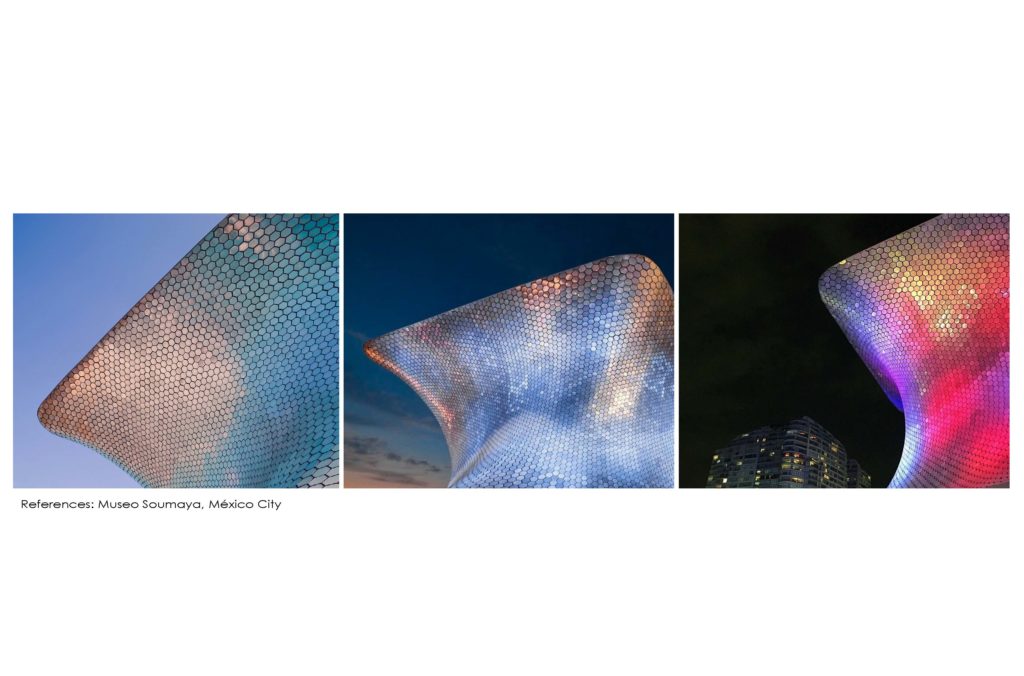Interactive Facade System
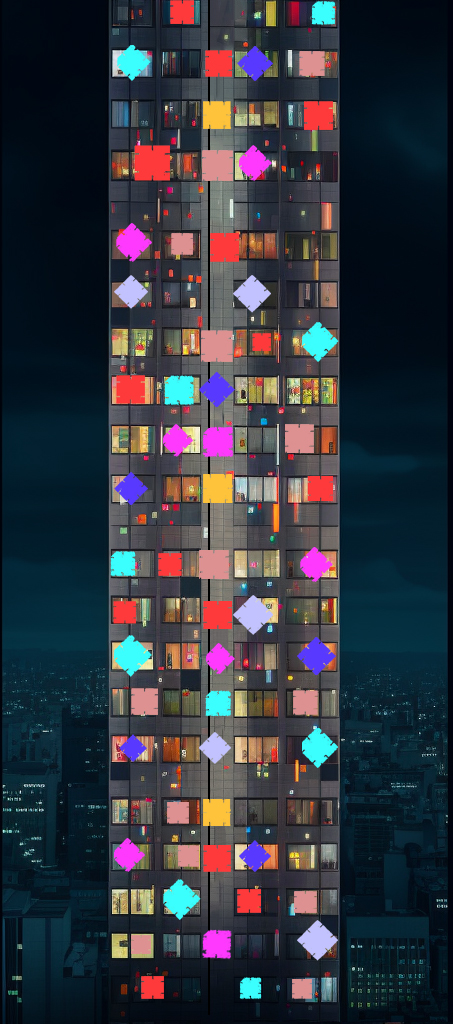
Introduction
Murr Tower, is a prominent abandoned skyscraper located in the city of Beirut, Lebanon. The tower was initially intended to be a luxurious residential and commercial complex. Construction began in the 1970s but was halted during the Lebanese Civil War (1975-1990). The tower remained incomplete and abandoned for years, serving as a reminder of the impact of the civil war on the city.
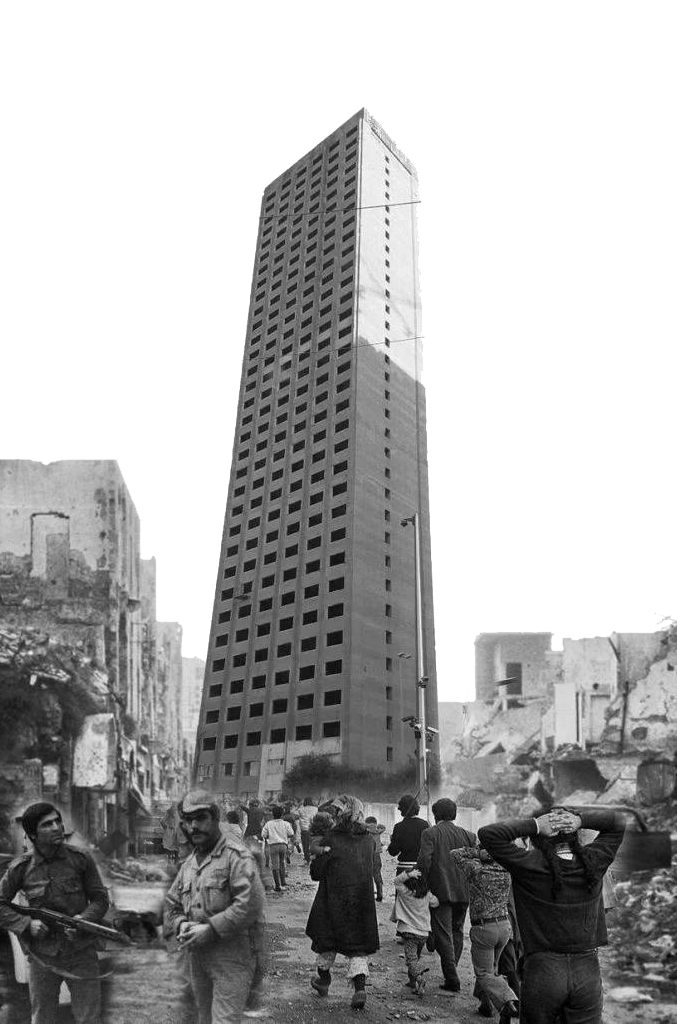
Concept
The concept of this project is to Reactivate, Revive and Revitalize the Murr Tower through the establishment of an innovative museum.
It involves the integration of an interactive second skin onto the facade, responsive to varying light intensity (solar) and precipitation levels, thereby contributing to the tower’s revitalization.
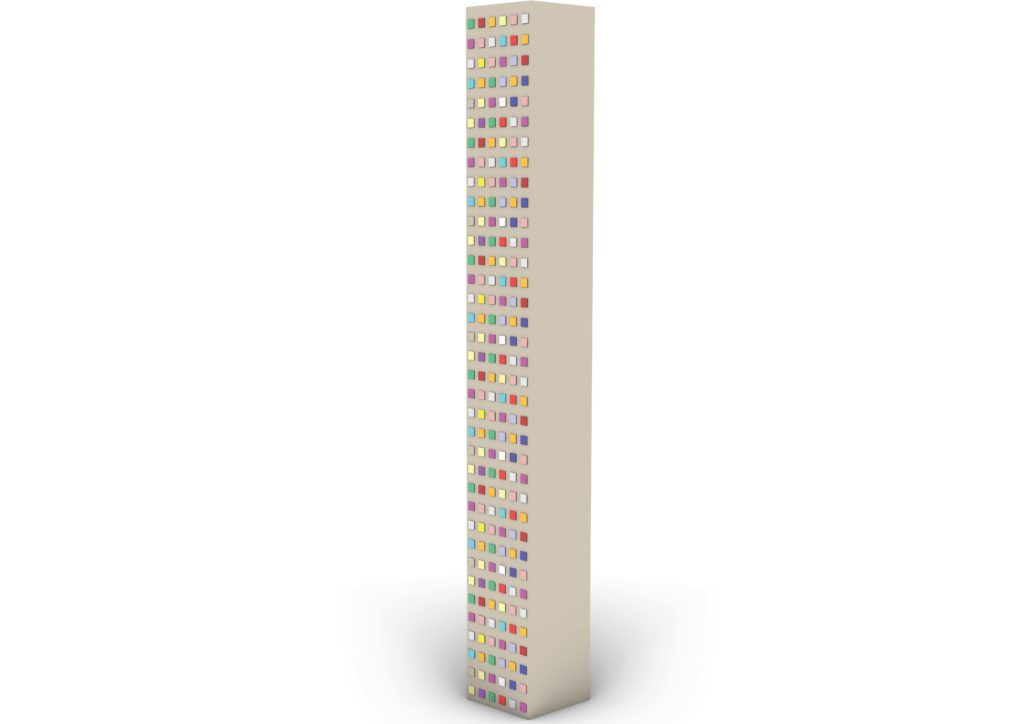
Schematic
A smart façade system detects environmental changes and modifies the angle of the façade system, which creates constant change in the dynamism of the building envelope. The Building has a default system, If the building is exposed to direct sunlight, then the system rotates at 45°, Else if it is raining it rotates to 90 ° to fully close the openings.

System
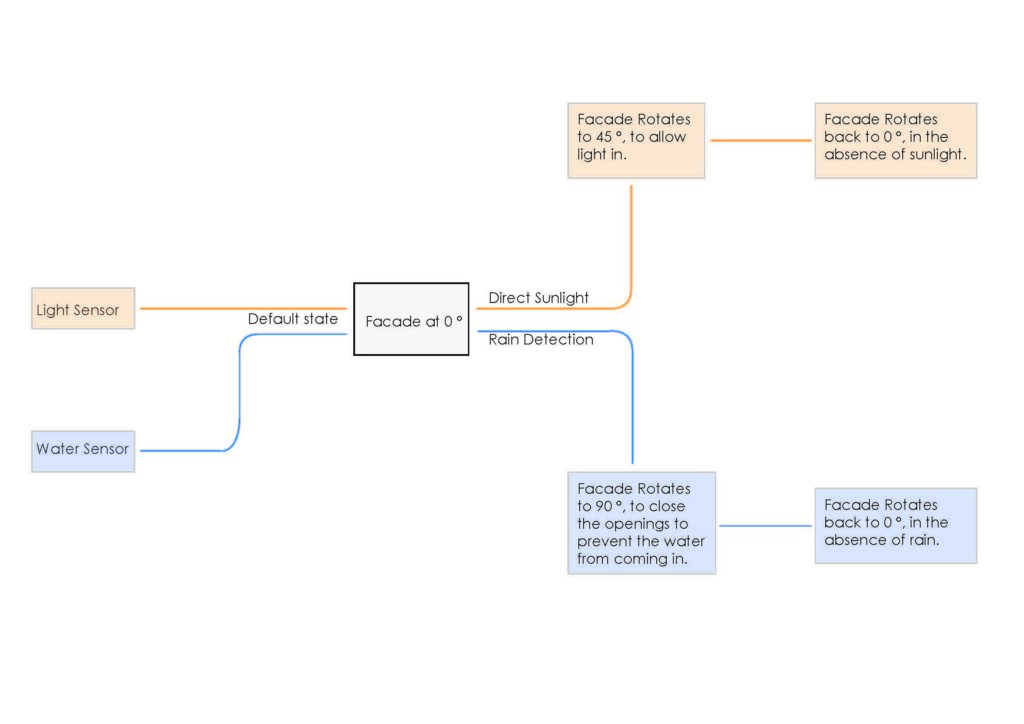
Bill of Materials

Digital Prototype
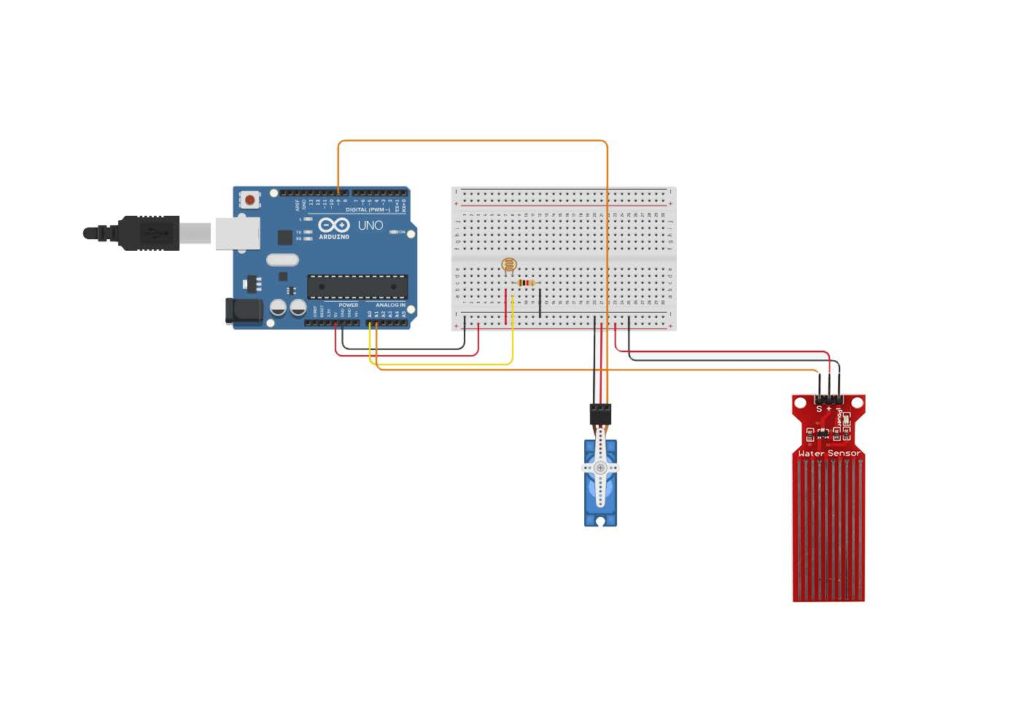
Code
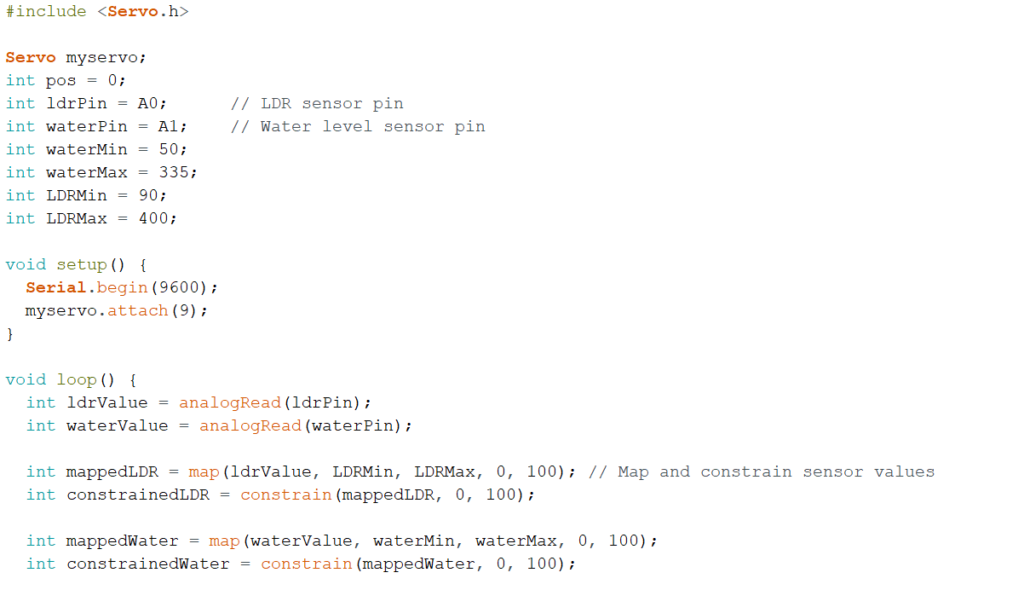

Prototype
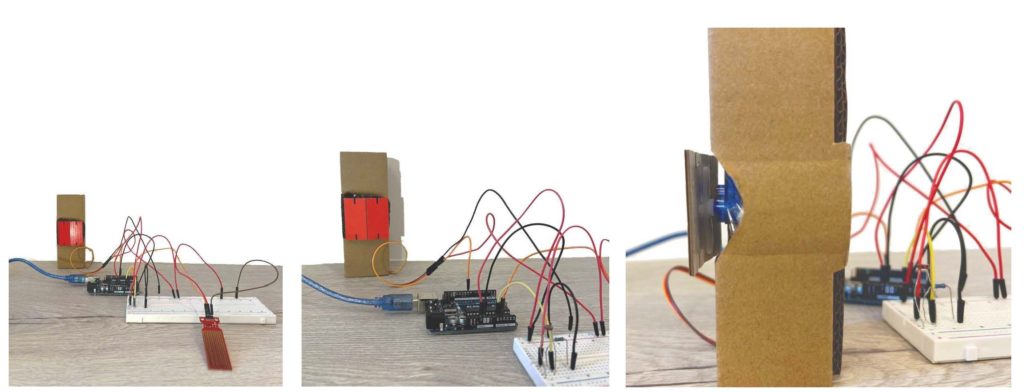
Prototype Video
Final Video
What’s next..
1. Aesthetic Variation: Visual Appeal: Color-changing facades can adapt color to suit different times of the day, seasons, or special occasions.
2. Energy Efficiency: Solar Heat Gain: The color of a facade can influence its absorption of solar radiation. Lighter colors tend to reflect more sunlight, reducing heat absorption and contributing to energy efficiency, especially in warmer climates.
3. Interactive and Responsive Design: User Engagement: Facades that change color based on user input or environmental conditions can engage and captivate passersby. Interactive elements can be integrated, allowing the community to participate in the building’s appearance.
4. Energy Efficiency and Sustainability: Kinetic facades will play a crucial role in enhancing the energy efficiency of buildings. By optimizing natural light and ventilation based on environmental conditions, these facades can contribute to reduced energy consumption for lighting, heating, and cooling.
